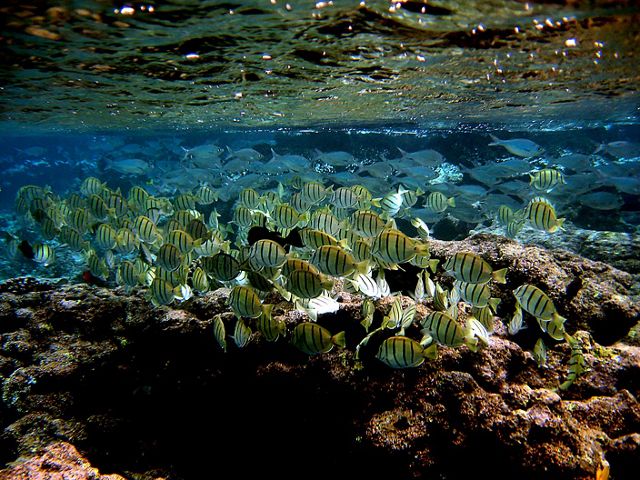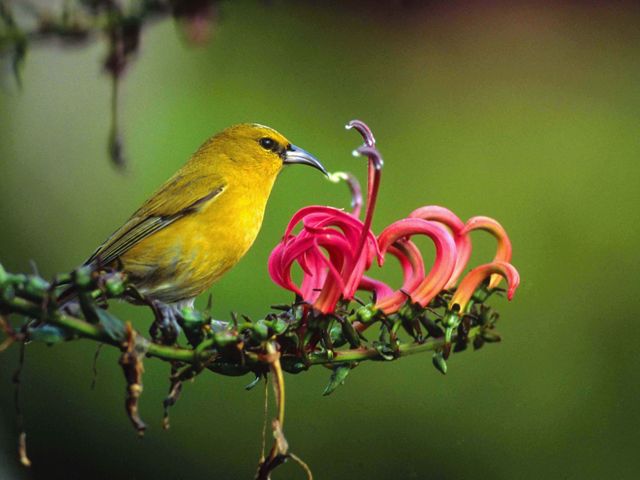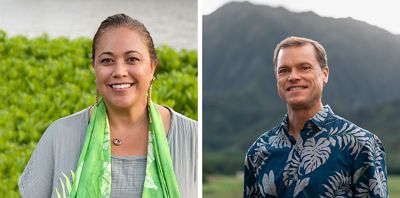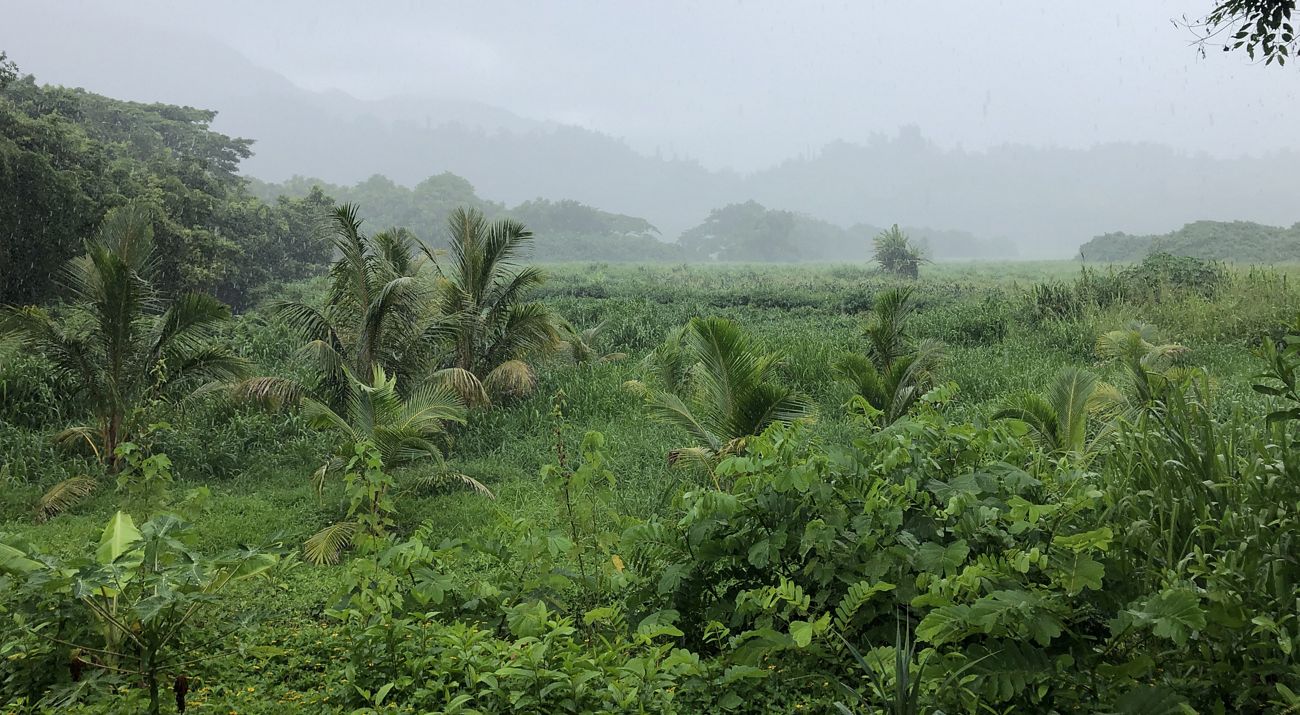By Ulalia Woodside, Executive Director and
Trevor Taylor, Director of Conservation
The Nature Conservancy, Hawai‘i and Palmyra
Hawaiʻi is home to some of the most unique plants, animals, fish and corals on the planet. From honeycreepers’ bright songs in the forest to the vibrant colors of life on our reefs, the biological richness of Hawaiʻi is unmatched. As we celebrate Earth Day, we acknowledge the critical role the natural world plays in our way of life, our economy and our culture—and the many threats it faces, from invasive species to climate change.
Hawaiʻi is feeling the impacts of a changing climate in the form of more frequent and severe storms, less total rainfall, higher temperatures, coral bleaching, and sea level rise and larger waves that threaten coastal areas. In 2021 polling conducted by New Bridge Strategy, Hawaiʻi voters ranked restoring coral reefs and forests nearly as high as healthcare and affordable housing. A 2022 survey from FM3 confirmed that voters care deeply about nature: 96% believe it is their responsibility to protect Hawaiʻi’s ocean and cultural legacy for future generations, and 91% believe that Hawaiʻi should increase its investment in protecting land, water and wildlife. It is clear we are now realizing what our ancestors knew intimately—that the health and well-being of our people depend on the protection and restoration of Hawaiʻi’s spectacular diversity of life.
Quote: Jennifer Morris
TNC’s work in Hawai‘i and Palmyra shows how we can build our collective ability to thrive as we address the climate crisis and adapt to its impacts.

Preserving our native forests benefits people on many fronts. Forests not only provide Hawai‘i’s sole source of freshwater and a direct connection to Hawaiian culture, they also are critical to lessening climate impacts because trees absorb carbon dioxide, removing it from the atmosphere. TNC’s Kona Hema Preserve on Hawaiʻi Island protects part of an ancient koa-ʻōhiʻa forest that spans more than 100,000 acres (that’s about four times as big as Disney World!) and is home to rare species such as the endangered ʻōpeʻapeʻa (Hawaiian hoary bat), one of only two mammals native to Hawai‘i. Fencing and effective management protect rare flora and fauna from damage caused by introduced hoofed animals, helping to ensure a healthy watershed and providing fresh water and erosion control for South Kona’s population of 25,000 people.
Hawaiʻi’s once fertile reefs and well-managed fisheries helped sustain a self-sufficient population for a thousand years. Over the past century, impacts from overfishing, land-based pollution and invasive species have contributed to a 60% decline in live coral cover on some reefs and a 90% decline in some of our most commercially important reef fish species. Our work with more than 50 coastal communities and many other partners over the past 20 years has focused on improving reef health and nearshore fisheries. Enhancing reef resilience is vital for protection of our coasts, culture, economy and livelihoods, and will help us adapt to an uncertain climate future.

The Nature Conservancy (TNC) and partners have been working for years to preserve and restore our islands’ natural areas. Informed by science and guided by Native Hawaiian values and practices, we use a collaborative approach to help ensure a healthy environment and resilient communities across the state. We also apply innovative, nature-based solutions to reduce the impacts of climate change. The most recent assessment report from the United Nations’ Intergovernmental Panel on Climate Change (IPCC) emphasized the need to invest in natural climate solutions to accelerate the global transition toward net-zero emissions.
On a recent visit to our islands, TNC CEO Jennifer Morris observed, “TNC’s work in Hawai‘i and Palmyra shows how we can build our collective ability to thrive as we address the climate crisis and adapt to its impacts. Our work with partners in restoring forests and wetlands, reviving traditional Hawaiian agriculture, and improving coral reef health and fish abundance all contribute to a more sustainable future. At the same time, healthy natural systems bolster biodiversity, food and water security and the natural resources that enrich our lives and sustain our communities.”
Recognizing the value of protecting the nature that sustains us, Hawaiʻi’s Congressional delegation recently secured funds for multiple projects and organizations to boost the resilience of our native forests, coral reefs, coasts and communities. This support includes fencing at Kona Hema and coral restoration on Hawai‘i Island, wetland restoration and food security on O‘ahu and community-based coastal management across the islands.

We are so thankful for the support of our delegates and their willingness to invest in Hawai‘i’s future. While these funds will bolster work already being done to protect our watersheds, coasts and native species, these efforts are only part of the solution. Hawai‘i will continue to face significant threats to people and nature in the coming years. And, TNC will continue to collaborate with our many valued partners—landowners, communities, businesses, government agencies and others—to achieve meaningful and sustainable solutions to our islands’ most pressing challenges.
We know the people of Hawaiʻi cherish these lands and waters on which all life depends. As we celebrate Earth Day, we ask that you take action, big or small, to support our collective future. If you don’t know where to start, watch our Let’s Talk Climate video and get a conversation started. By working together, we can maximize nature’s resilience and preserve Hawaiʻi’s rich biological tapestry for many Earth Days to come.

